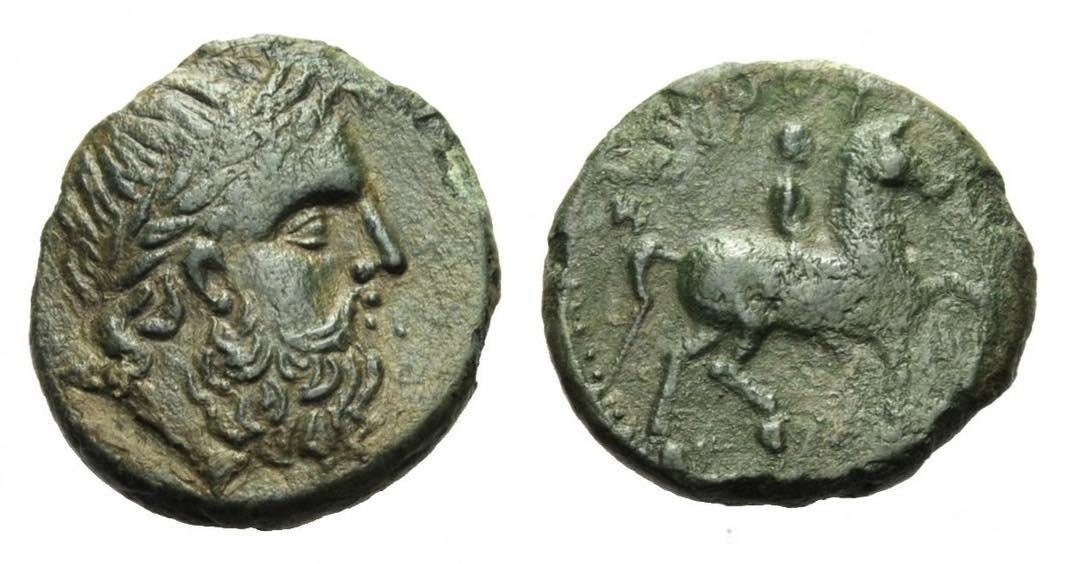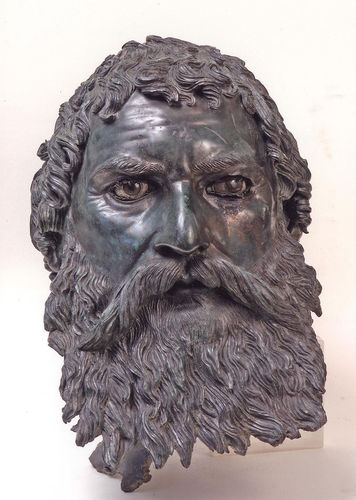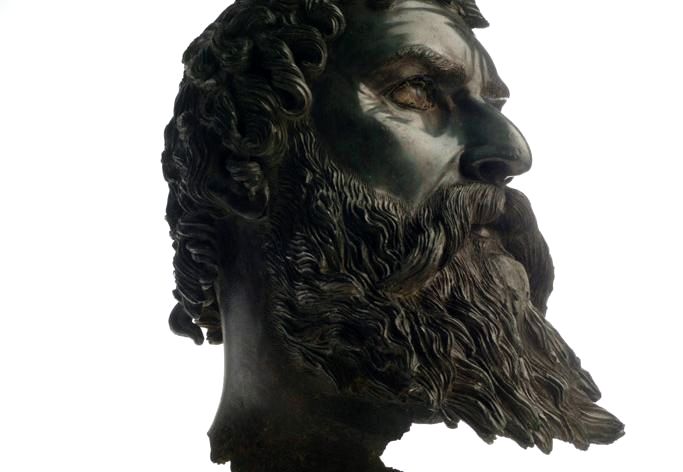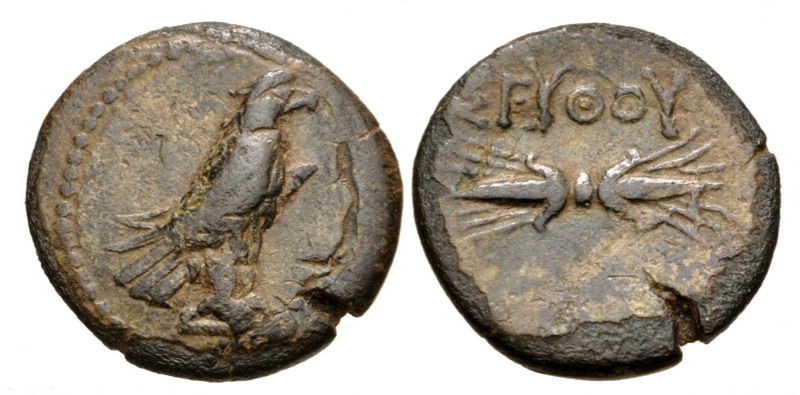Who is on the obverse of this coin?

Laureate head right/horseman right.
19-18 mm. 4.76 grams.
Coins and archaeology work together
Who is on the obverse of this coin?

Laureate head right/horseman right.
19-18 mm. 4.76 grams.
The reverse legend, beginning at 10:00 which is weak on this example, says ΣEYΘOY, so we know this coin from Thrace was issued by Seuthes who was King of the Odrysai, in Thrace. By various means, we know it refers to the third of that name, Seuthes III, who ruled c. 330-295 BC, beginning at the time of Alexander the Great. But, who is portrayed on the obverse?
In the fourth century BC when this coin was struck it was common to have the Greek god Zeus on the obverse, severe and bearded. The usual portrait of Zeus looks much like on this coin, but with handsome classic features that are more regular and with a neater mustache and beard. The tribe and its coinage are obscure, so maybe this is just a crude portrait of Zeus? Except for rare coins of Persian satraps in Asia minor, it was unheard of to have an actual portrait of a ruler this early, so older reference works, like the Catalog of Greek Coins in the British Museum, described the obverse portrait as "Head of Zeus, right, laureate." BMC Thrace, page 203, Seuthes III, #1-2, his only coin type in BMC.
However, the attribution changed when a spectacular bronze head was discovered in what was presumed to be his tomb in 2004 in Bulgaria. The head now belongs to the National Archaeological Museum in Sophia (and was exhibited in 2012 at the show entitled "Bronze" at the Royal Academy of Arts in London). Here is a link to the wikipedia article about his tomb: https://en.wikipedia.org/wiki/Tomb_of_Seuthes_III


The wild mustache and beard looks a lot like they do on the coin. Now we can identify the bust from the coin and the coin from the bust. Together they confirm that the coin portrait is not a crudely engraved Zeus, rather Seuthes III himself on a remarkably early portrait coin. Now the above type is identified as "Hoover, Handbook of Greek Coinage, Macedon II, 1714." It is also Sear Greek 1725.
Little is known about Seuthes III, but we do know he was recognized as ruler by Lysimachos. He issued several other types, listed in Hoover, which are mostly rare. One of his other types is next.

Seuthes III, c. 330-295 BC.
17.5 mm. 3.01 grams.
Eagle standing right, no legend
Thunderbolt, with ΣΕΥΘΟΥ above.
Hoover, HGC Macedon II, 1715.
Return to the master site on Ancient Roman and Greek Coins.